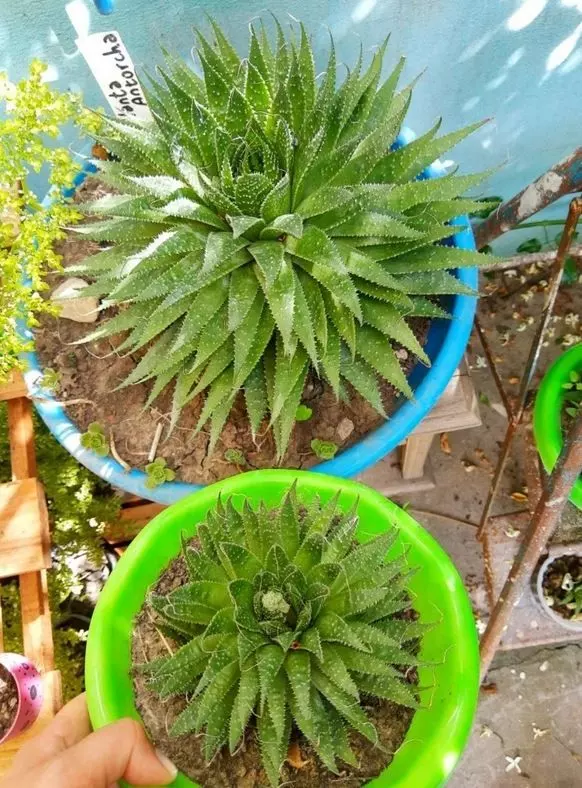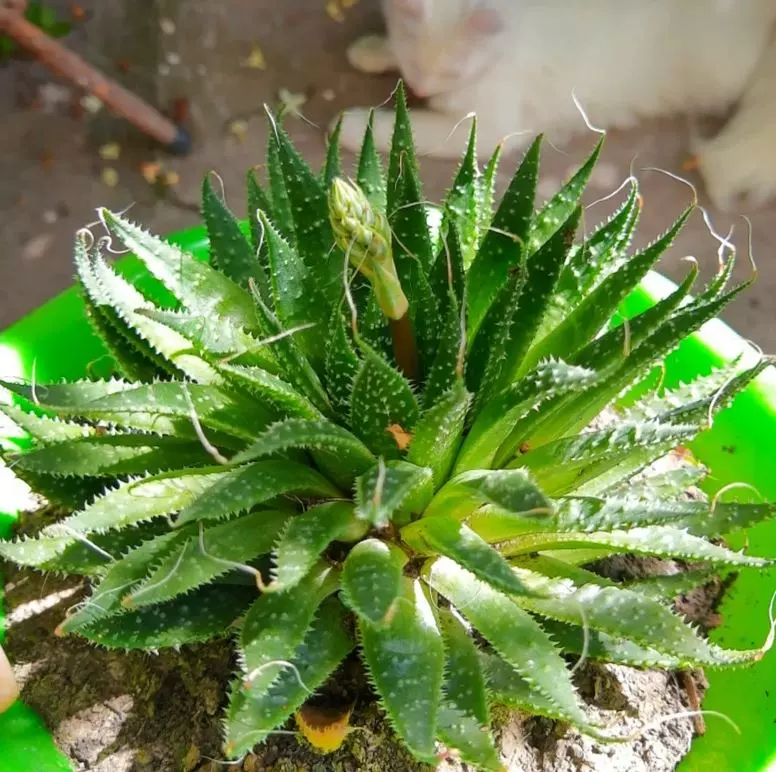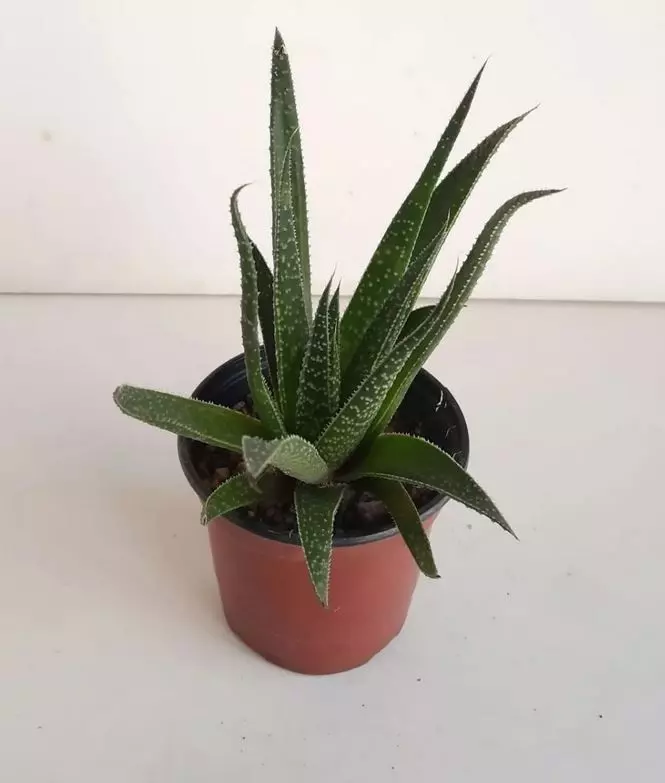Aloe aristata grows up to 8″ (20 cm) in height and about the same in diameter.
From late spring to early summer, it produces long stems, up to 20″ (50 cm) high, which has orange-red flowers at the end. These flowers are tubular and up to 1.5″ (4 cm) long.
Thanks to its symmetry is a perfect plant to decorate, it also has a size neither too small nor too large so we can place it, from the edge of a window to as a centerpiece.
It is another unique plant that deserves proper care.
This aloe is frost resistant; down to 1.4°F (-17ºC) and has leaves that mimic a Haworthia. Unlike most aloes, this one grows particularly fast.
It is a stemless plant, which produces triangular leaves in the form of dense rosettes.
The leaves are dark green and have white, tooth-like protrusions all over the leaves, with serrated edges, which are diamond-shaped when viewed in profile and triangular when viewed vertically and have a “thread-like” end.
It belongs to the plant genus “Aristaloe”, being native to South Africa. Like Aloe chinensis, Aloe aristata is the only species of the genus “Aristaloe”.
Table of Contents
A Quick Look at its Characteristics:
This plant prefers to be in full sun and partial shade.
Withstands prolonged extreme cold. Sensitive to extreme heat.
Grows to 8″ (20 cm) tall and 6″ (15 cm) wide.
It can be grown indoors if given enough light.
Prefers hot, dry climates. Resistant to cold. It can withstand up to 1.4°F (-17ºC)
Typical water needs for an Aloe. The tip of its leaves warns of the excess of water.
Non-toxic to humans and animals.
Inactive in summer. It grows actively in winter.

Care and Propagation Aloe aristata
Care:
Aloe aristata is the perfect addition to a miniature garden. It grows quickly, with rosettes forming clusters. Watch for pink flowers that appear in the summer. Its flowers can attract birds and bees to the garden, which will make it even more lively.

Watering Aloe aristata:
Aloe aristata has typical watering needs for an aloe, but it can be sensitive to overwatering. It is best to use the “soak and dry” method, and allow the soil to dry out completely between waterings.
Avoid spraying with this plant, as its leaves are close together and a small concentration of water between leaves can be deadly.
Where to Plant Aloe aristata:
This aloe is cold hardy, but if you live in a very cold area, it is best to plant this aloe in a pot that can be brought indoors when temperatures drop below freezing.
It does well in partial sun to partial shade. If you have it indoors, place it in a room that receives plenty of sunlight, such as near a south-facing window (if in the northern hemisphere).
Propagation Aloe aristata:
The easiest method of reproducing Aloe aristata is through tillers. These tillers can be easily pulled out in the spring, at the time of transplanting.

Seedlings Aloe aristata:
Pull them from the base of the plant. If possible, look for those tillers that have already begun to form rosettes of leaves.
Plant these young plants in the same cactus mix used for the main plant. They should be planted at a depth of 0.8″ (2 cm) and covered with a sprinkling of sand or perlite. This helps reduce rotting.
Place the easy-to-grow seedlings away from direct sunlight and moderate water. In a few weeks, you should begin to notice new growth.
Aloe aristata Uses:
This small-sized plant looks great alone on a shelf or small table. You can also plant it with other aloes or succulents in a grouping, rock garden, or large planter to create a showcase of low-maintenance succulent plants.
